Early Verdict
The Fujitsu SP-1425 is a perfect match for those who require a flatbed scanner for mixed media workloads and have a limited amount of space. That said, the price might put off some prospective buyers.
Pros
- +
Simple to operate
- +
Decent quality scans
Cons
- -
Expensive for what it offers
- -
Lack of Ethernet or wireless connectivity
Why you can trust TechRadar
There was a time, many years ago, when a flatbed scanner was a must-buy peripheral alongside a printer. Then the all-in-one arrived, which combines scanning and printing functionality along with faxing and photocopying.
Demand – and interest – for that new category of devices effectively killed off standalone scanners, as shown by the below Google trends graph from the past 13 years pitching flatbed scanners (in blue) up against multi-function printers or MFPs (in red).

However, vendors like Canon, HP, and Panasonic still believe in the future of this fundamental digitisation tool, even in the face of adversity.
Fujitsu unveiled the SP-1425 a few weeks ago. It’s a flatbed scanner that promises to “deliver simple operation and reliable performance for professional use,” especially for the SMB market. It is positioned as the top-of-the-range model and is the only flatbed scanner in the SP series.

At the time of writing and until the end of March 2017, the SP-1425 will come with a £100 cashback. PCWB sells it for £441 excluding VAT (for a total of £529 with VAT – that’s around $650, or AU$850).
At 454 x 331 x 129mm and weighing a mere 4.3kg, the scanner is smaller than expected with a compact footprint and a lower height compared to some rivals. Clearly, that makes it more appealing to small businesses where real-estate (i.e. desk space) can be a limited commodity.
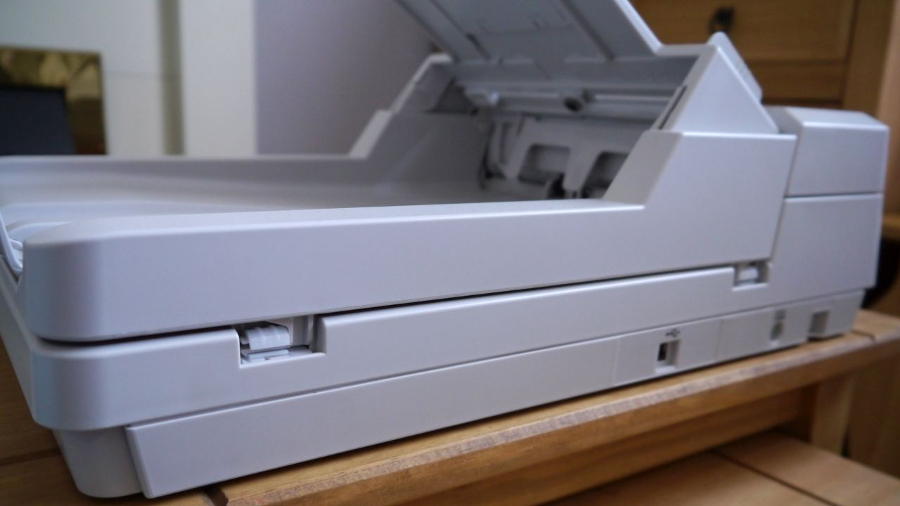
Fujitsu designed the scanner in such a way to minimise any potential human error. There’s no display here and only two buttons (Scan/Stop and Power), a far cry from the likes of the N7100 scanner with its 7-inch touch panel.
Such scarcity of controls on the scanner itself means that you must rely on the host device (the computer) to operate the hardware. More on that later.
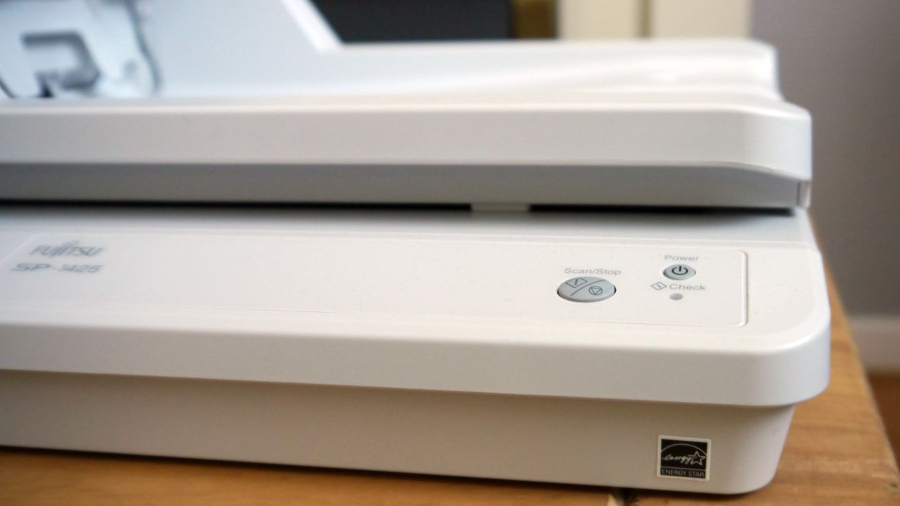
The chassis felt solid and sturdy despite the scanner’s lightweight nature. It’s rather bland looking, but this is a functional device for scanning, and not designed to be admired on your desk.
The SP-1425 has a quoted scanning speed of 25ppm (mono and colour) in simplex and twice that in duplex, and an impressive 50 images per minute is claimed (going by the ISO standard measures).

It uses an ultrasonic sensor to prevent paper jams and the maximum page size supported is 8.5 x 14-inches. The automatic document feeder/paper chute capacity is a mere 50 pages, though, with a rated 1500 sheets a day and an optical resolution of 600dpi.
Like the overwhelming majority of scanners and MFPs on the market, this one uses the tried-and-trusted USB Type-B connector.
There’s no other connector besides this, meaning there’s no Ethernet port and no wireless connectivity, and you might well expect more on a half-a-grand standalone scanner.
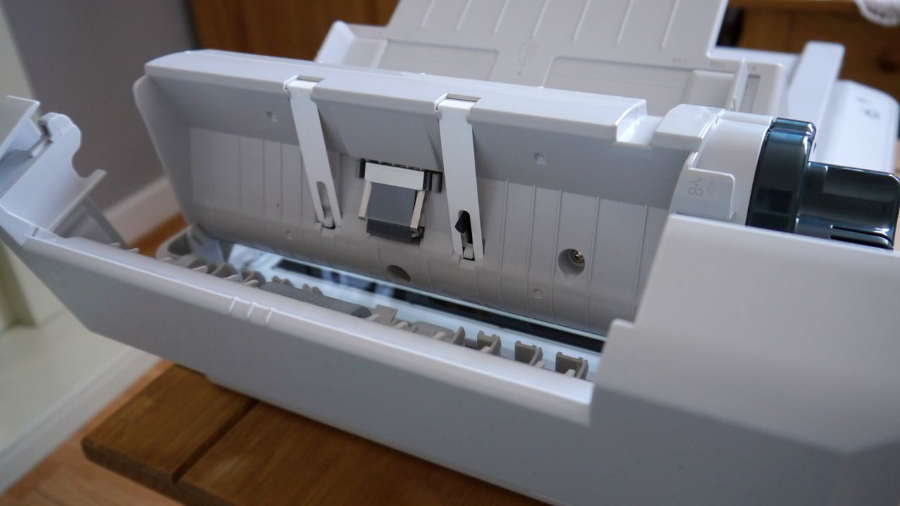
There’s already an online update for the scanner, one which targets Fujitsu’s very own PaperStream IP application. A DVD containing these applications is bundled with the SP-1425, which also features the PaperStream Capture Lite 1.0, Presto PageManager 9, ABBYY FineReader 12 Sprint and the Scanner Central Admin 4.6.
We ran into some issues with Capture Lite as it wouldn’t detect the scanner despite another popular photo management app, Irfanview, seeing it (note that Capture Lite is a 32-bit application and must be paired with 32-bit drivers).
We ended up using Windows 10’s own Windows Fax and Scan desktop application, a rudimentary but capable tool when it comes to digitising content rapidly. We didn’t install PageManager or FineReader; just bear in mind that neither are the latest versions, with the former being a shocking seven-years-old (and the second a more reasonable three-years-old).
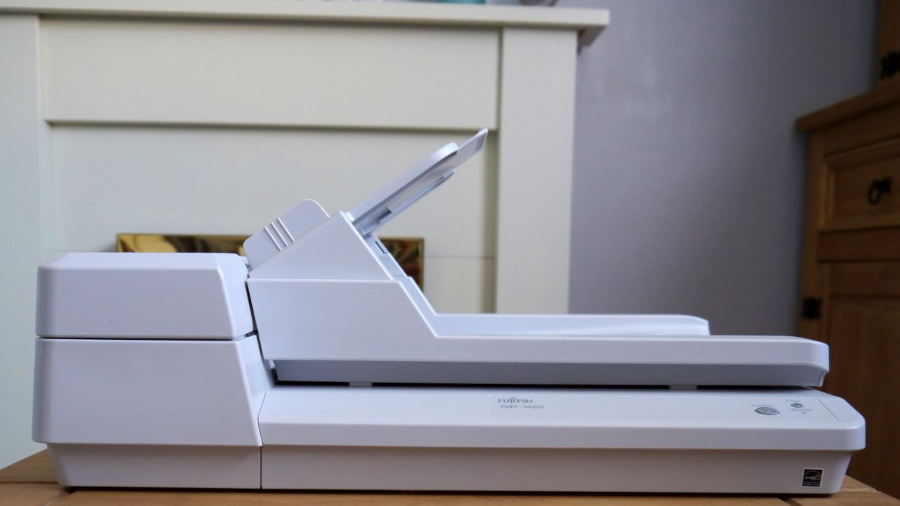
The scanner managed to convert 35 A4 sheets (that’s 70 pages) in just over four minutes, or an average scanning speed of 17.5 pages per minute, well under the rated speed (although bear in mind that WFS doesn’t allow scans at less than 300dpi in JPG format).
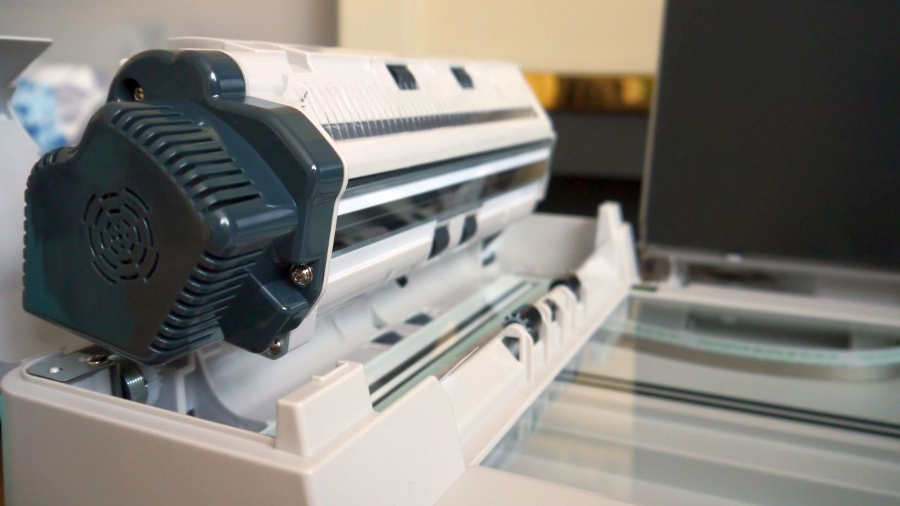
Make sure the paper tray is properly adjusted as the SP-1425 is very sensitive to misaligned paper sheets which can cause paper jams. To its credit, the scanner handled various types of printed paper (folded, thicker, thinner, and sheets slightly bigger than A4) very well.
The quality of the scanning was more than acceptable in an office environment, even for smaller font sizes.
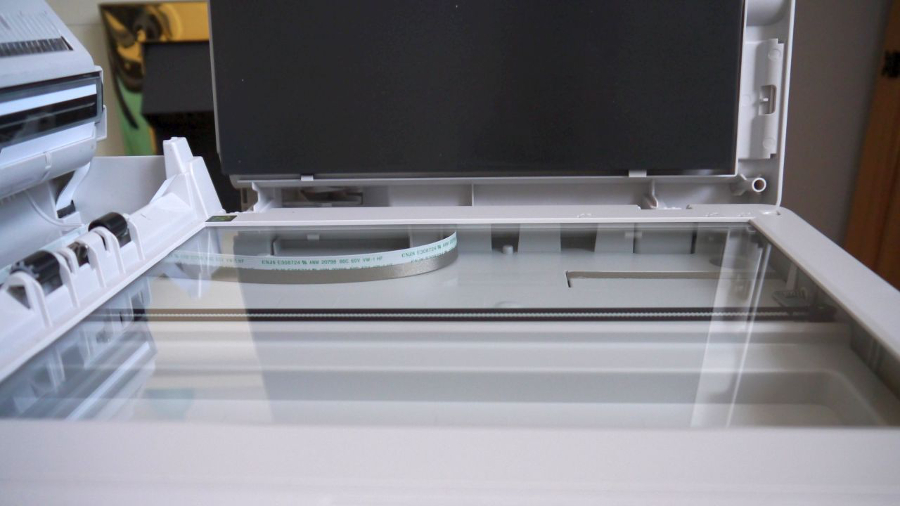
Early verdict
Fujitsu’s flatbed offering looks like a perfect match for the SMB market. It is reasonably quick and accurate, and the bundled software is on par with the rest of the competition. It’s a great choice if you’re short on space and you wish to digitise a mixture of different types of media.
Look at the rest of the competition, though, and it is abundantly clear that the SP-1425 is an expensive model even given its rated scanning speed. A comparable scanner, the HP ScanJet Pro 3500 F1, may well be bigger but it has a faster USB 3.0 port and costs about half the price.
If you can live with a device that has a bigger footprint, then consider the Brother MFC-8950DW which has a rated scanning speed of 40ppm. It is an MFP so can print, fax and copy as well, plus it has a longer warranty, wireless connectivity, Gigabit LAN and costs far less than the SP-1425.
Should you need to scan loose sheets, then sheet-fed scanners like the Panasonic KV-S1027C should be at the top of your list given that they are even smaller and usually come packed with features. The aforementioned model, for example, has a rated duplex speed of 90 images per minute and a 100-sheet automatic document feeder.
- Or you might want to see our list of the best scanners of 2017

Désiré has been musing and writing about technology during a career spanning four decades. He dabbled in website builders and web hosting when DHTML and frames were in vogue and started narrating about the impact of technology on society just before the start of the Y2K hysteria at the turn of the last millennium.
What is a hands on review?
Hands on reviews' are a journalist's first impressions of a piece of kit based on spending some time with it. It may be just a few moments, or a few hours. The important thing is we have been able to play with it ourselves and can give you some sense of what it's like to use, even if it's only an embryonic view. For more information, see TechRadar's Reviews Guarantee.